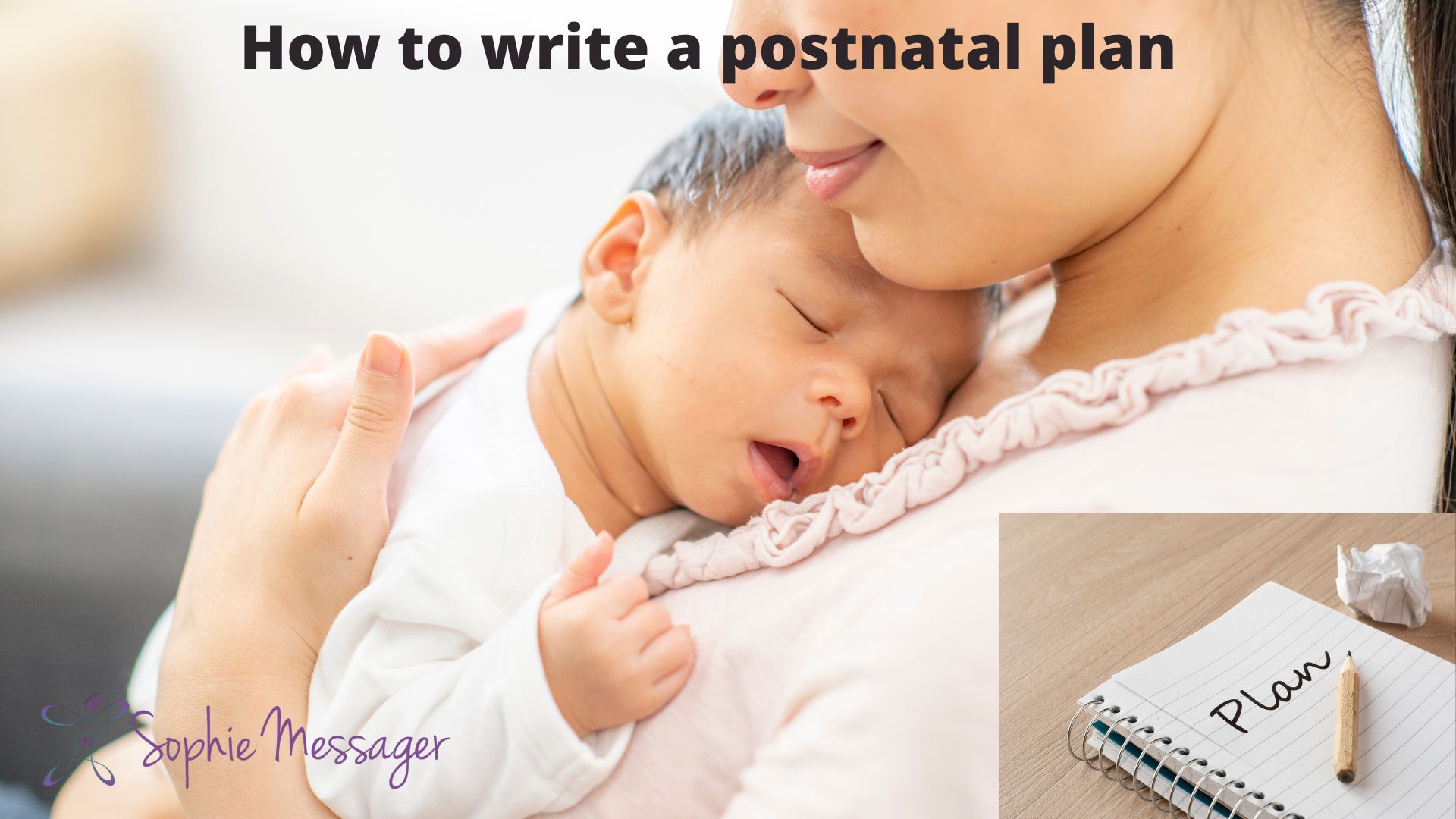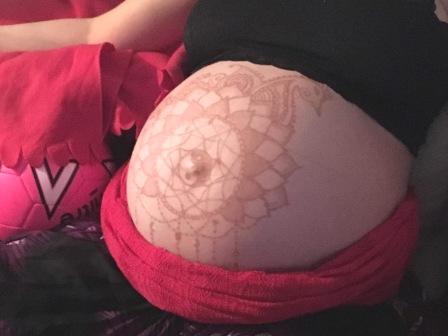There is a simple secret I wish everybody knew! Wrapping your hips (and your belly) can help with many common ailments, from pelvic pain to period pain to back pain. Beyond the pain itself it is also very useful practice that you can use in your daily life when you feel the need for support and to help you feel centred/grounded.
I learnt about the practice nearly 10 years ago when I learnt the art of using a Mexican scarf called a Rebozo to support women during birth. Since then I have been using it for myself in many different forms, using rebozos, woven belts and velcro wraps. I’ve been using it during my period, and when I feel the need to be ‘together’ such as when facilitating workshops, or giving closing the bones treatments and healing sessions. I wrote a blog about the use of wrapping in the postnatal period, which includes video tutorials.
In this post, I want to explain why wrapping isn’t only useful after birth. It’s a secret that should be taught to young girls when they reach their first periods, shown to use during the menstrual cycle, taught to every pregnant woman and new mother, and to older women too. Every time I teach this technique, everyone finds it wonderful. They put the rebozo around their hips, and they don’t want to take it off.
My research has shown me that using a belt to keep the womb warm/for protection, is a universal practise. I even found evidence of the practice been a European ritual, via ancient Greece historian Odile Tresch, and recreated by French seamstress Nadege Feuillet.
 Why does wrapping helps?
Why does wrapping helps?
On a physical level, it holds bones, muscles and ligaments in place, which acts as scaffolding and allows your pelvis soft tissues to relax (a bit like putting your feet up after a long day standing up). It provides gentle support to the uterus. Wrapping your hips/pelvis makes you feel more stable and contained. It also provides a source of warmth which is comforting and healing.
On an emotional level it makes you feel held and protected. It also helps to feel more present in one’s body return to the body, which can feel grounding and reduce stress. There is something about being wrapped that feels very primal, think baby in the womb, or baby being swaddled. I believe the calming effect is a mix of being able to feel the contours of one’s body, but also being reminded of the primal sensations of being in our mother’s womb.
On a more spiritual level it helps you to feel grounded, returned to your centre, feel less ‘open’ and a gives sense of protection.
When to use it?
During your periods/throughout the menstrual cycle.
I find wrapping my pelvis and/or belly or both during my period a great source of comfort. I crave warmth during that time, and the wrapping provides that. During my period I feel ‘open’ on an energetic level, and the feeling of being ‘closed’ by the wrap feels very good. I like to use one of my rebozos for this, but my favourite by far is using one of womb belts, which were woven on my request based on the design of the Colombian Chumbe belt, share with me by Colombian doula Laura Leongomez. I also like the Belly Blanket from Cherishing everything, which has a little pocket for a hot water bottle sewn in.
During pregnancy
Wrapping can help support the pelvis and provide much needed comfort when pregnant. It can also provide relief when you suffer from PGP (Pelvic Girdle Pain, also previously known as Symphysis Pelvic Dysfunction or SPD). Once, a pregnant woman bought a rebozo from me. The next day she sent me this message:
 I had ever heard of rebozo or using the shawls to wrap your hips and thought that anything was worth a try as I am in such horrendous pain. Since using the wrap I have been able to do shopping and walk around without crying in pain, it makes a huge difference, so easy to use, looks pretty and I love that I can use it during labour and after as a sling! Hannah
I had ever heard of rebozo or using the shawls to wrap your hips and thought that anything was worth a try as I am in such horrendous pain. Since using the wrap I have been able to do shopping and walk around without crying in pain, it makes a huge difference, so easy to use, looks pretty and I love that I can use it during labour and after as a sling! Hannah
Just bear in mind that whilst wrapping may provide relief, it will not treat the underlying condition. Seeing a good manual therapist such as an osteopath, a chiropractor or physiotherapist who specializes in pregnancy can do that. The pelvic partnership, a charity which provides support and information about PGP, says
“Support belts can be helpful to manage symptoms between treatments by keeping your pelvis supported in the correct position and helping to stabilise it. However, if you wear one without first having your pelvic joint alignment checked, it is likely to aggravate your pain. If your joints are not properly aligned, pushing them together with a belt can cause more irritation and pain at the joints. If you experience more pain when you put it on, take it off and contact your manual therapist for advice and treatment. You usually need to remove a belt when you sit down as it can dig into the top of your legs and bump – belts are most effective when you are walking.”
There are scenarios where wrapping will be a fantastic support when you cannot access a therapist or whilst waiting to see one. I made this tutorial when a pregnant doula friend missed her osteopath appointment due to attending a birth and couldn’t get out of bed the next morning. With the rebozo in place she was able to manage the discomfort until she got another appointment.
Here’s another testimonial about such a situation:
During my 3rd pregnancy I had PGP from quite early on. By my third trimester I was in quite a lot of pain and I couldn’t get to my usual chiropractor or pregnancy yoga class due to the first lockdown. I asked Sophie and she suggested pelvic wrapping. It really helped me feel supported and less painful. I also found it really helpful to wrap in a warm wheat bag on the painful spot and that really made a big difference. I continued for the first couple of weeks postpartum as well while I was still recovering. Tam West
In the tutorial below I show you a simple way to wrap your hips with a rebozo
People have reported the fact that wrapping their pelvis helped with back pain too.
 My Womb Belts which are the most effective form of pelvic support, and you can watch a video on how to use them here
My Womb Belts which are the most effective form of pelvic support, and you can watch a video on how to use them here
During the postpartum
During the postpartum wrapping your pelvis or abdomen after birth will help support instable joints and muscles. I wrote a blog about it called The lost art of postnatal wrapping.
When you feel unwell
The feeling of containment and extra warmth wrapping provides can feel very comforting.
Outdoors when the weather is cold
I’m a year round wild swimmer, and I have found that wrapping my belly post swim in the colder months is a very good way to warm up. The same is true when spending a lot of time outdoors in the cold. When I told my mother about my use of Japanese Haramakis to keep my core warm, she explained that, where I grew up in Brittany, farmers often wore such kidney belts to keep warm when working outdoors. UK brand Nukunuku has a range of Haramakis. These do not provide firm support like a rebozo or belt, but they do keep the core warm.
 What can you use to wrap your hips and belly?
What can you use to wrap your hips and belly?
Rebozos are perfect for this, providing just the right level of grip and strength. You can find some in my online shop . Other shawls and scarves may work well too, try with what you have at home.
You can use lots of other things too, such as scarves and pashminas that you already have. Fabric belts can work well too. A pregnant friend even used the belt from her dressing gown!
There is also the option to use velcro wraps for the hips. The sacroiliac pelvic belt from Belly Bands, or the Serola sacroiliac belt.
I did an hour long live on Instagram with my wise doula sister Laura Leongomez from Colombia, about the wisdom of hip wrapping. You can watch it on my Instagram IGTV, or on my Youtube channel.
Have you tried wrapping your belly and hips? Did you find it helpful? I’d love to hear from you, just comment below this blog.
If this inspires you and you’d like to find out more, you may want to check my online courses, which include a course about postpartum wrapping, and 2 rebozo courses (one for pregnancy and birth, and one about a postnatal rebozo massage and wrapping ritual).












